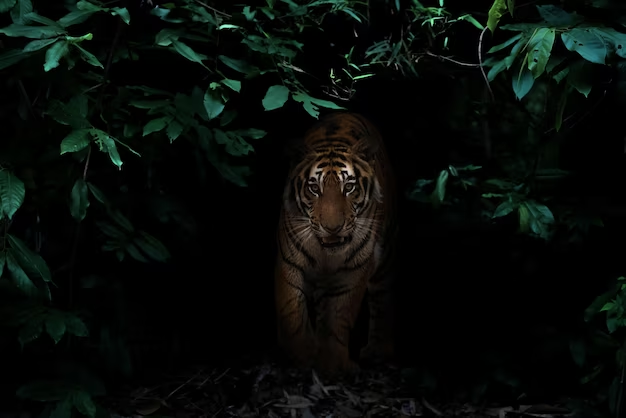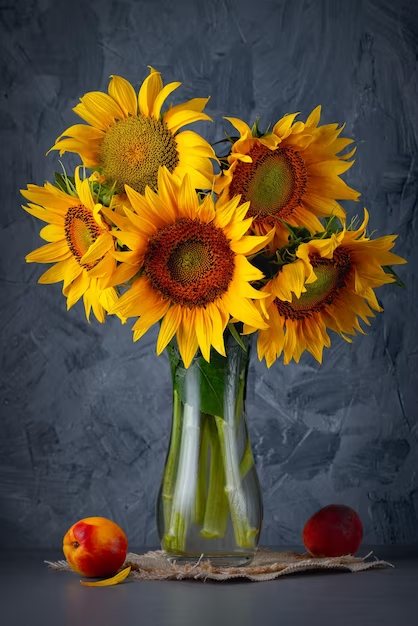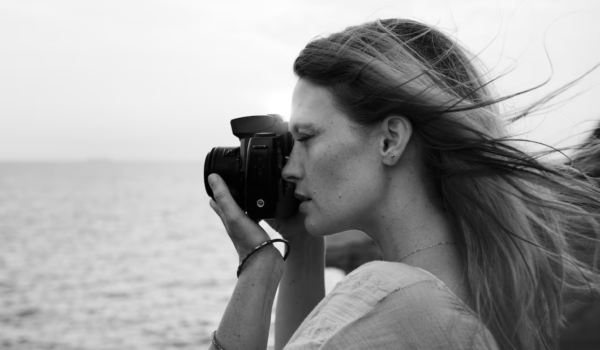In the captivating world of photography, mastering the concept of emphasis is essential to create impactful and visually striking images. Emphasis refers to the deliberate highlighting of specific elements in a photograph to draw the viewer’s attention and evoke a desired response. Whether you’re a seasoned photographer or a novice exploring this fascinating realm, understanding emphasis will elevate your skills to new heights.
What is Emphasis in Photography?
Emphasis, in the context of photography, revolves around making certain subjects or elements within an image stand out prominently. By employing various visual techniques, photographers can guide the viewer’s eyes to the main point of focus, telling a compelling story and enhancing the overall impact of the photograph.
The Role of Composition
Composition plays a pivotal role in emphasizing the subject. Techniques like the Rule of Thirds, leading lines, and framing can be employed to direct attention to the main subject effectively. Utilizing the right angles and perspectives can also create a sense of depth and dimension, further enhancing the emphasis.
Importance of Lighting
Lighting is a powerful tool for creating emphasis. Skillful use of light and shadow can highlight the subject, adding drama and emotion to the photograph. Photographers can experiment with different lighting setups to achieve the desired effect, whether it’s soft and subtle or bold and dramatic.
Techniques for Emphasizing Your Subject
To bring out the full potential of your photographs, it’s crucial to employ various techniques of emphasis. Let’s delve into some of the most effective ones:
Depth of Field
Controlling the depth of field allows you to isolate the subject from the background, making it stand out prominently. A shallow depth of field achieved through a wide aperture blurs the background, drawing all attention to the sharp subject.
Color Contrast
Using color contrast strategically can create a visually striking emphasis. Complementary colors or a splash of vibrant color against a neutral backdrop can immediately capture the viewer’s attention.
Selective Focus
By utilizing selective focus, you can direct attention to a specific area of the image. This technique is particularly useful in portraits, macro photography, and capturing intricate details.
Leading Lines
Incorporating leading lines in your composition can guide the viewer’s eyes towards the subject. These lines can be actual lines within the scene or implied lines formed by the arrangement of elements.
The Power of Emphasis: Real-Life Examples
Let’s explore some real-life examples where emphasis is effectively employed to create visually compelling photographs:
Example 1: Wildlife Photography
In a stunning wildlife photograph, the photographer uses a shallow depth of field to emphasize the majestic tiger in a lush jungle. The soft, blurred background allows the viewer to focus solely on the tiger’s intense gaze.

Example 2: Still Life
A captivating still-life photograph showcases a vase of vibrant sunflowers against a dark, muted background. The color contrast and selective focus draw attention to the cheerful blooms, creating a sense of warmth and energy.

Tips for Emphasizing Different Subjects
The techniques for emphasis can vary based on the subject you’re capturing. Let’s explore how to emphasize different subjects effectively:
Portraits
In portrait photography, the subject’s eyes are often the primary point of emphasis. Ensure that the eyes are sharp and well-lit, capturing the viewer’s attention and revealing the subject’s emotions.
Landscapes
To emphasize a captivating landscape, focus on elements that add depth and scale. Leading lines, foreground interest, and bold colors can all contribute to creating a powerful sense of emphasis.
Architecture
In architectural photography, angles and perspectives are crucial for emphasis. Highlighting the unique features of the building and using leading lines to guide the viewer’s gaze can create captivating images.
Macro Photography
When capturing intricate details in macro photography, selective focus is your best friend. Emphasize specific parts of the subject to reveal its beauty on a small scale.
Emphasis Techniques for Various Genres
The application of emphasis techniques can vary depending on the genre of photography you’re exploring. Each genre requires a unique approach to highlight the subject effectively. Let’s delve into how emphasis can be utilized in different photography genres:
- Portrait Photography: In portraits, the subject’s face and eyes are often the focal points. Use techniques like shallow depth of field, leading lines directing towards the subject’s face, and lighting that enhances facial features;
- Landscape Photography: Landscapes often have multiple elements of interest. Emphasize the main subject, such as a mountain or tree, by using leading lines, framing with natural elements, and capturing the subject during golden hour for dramatic lighting;
- Macro Photography: Emphasizing intricate details in macro shots is essential. Utilize selective focus, lighting, and framing to draw attention to the tiniest elements, revealing their beauty;
- Street Photography: In bustling street scenes, emphasis can be achieved by capturing a moment of significance amid the chaos. Look for contrasts, juxtapositions, and unique interactions to create impactful images.
The Art of Emphasizing Emotion
Emotion is a powerful aspect of photography that can be emphasized through various techniques. Capturing and conveying emotions in your images can deeply resonate with your audience. Here’s how to emphasize emotion in your photographs:
- Candid Moments: Candid shots often capture genuine emotions. Wait for the right moment to unfold and be ready to capture raw emotions without interfering with the scene;
- Expressive Portraits: In portrait photography, emphasize emotions by focusing on the subject’s expressions. Ensure the subject feels comfortable and relaxed to convey authentic emotions;
- Storytelling Images: Create a series of images that tell a story and evoke emotions in the viewer. Use a combination of composition, lighting, and timing to build a narrative;
- Using Props and Gestures: Incorporate props or encourage subjects to use gestures that convey emotions related to the theme of the photograph. These elements can add depth and meaning to the image.
The Role of Perspective and Angles
Perspective and angles are essential elements that can greatly influence the emphasis in your photographs. By choosing the right perspective and angle, you can alter the viewer’s perception of the subject and create a more dynamic and engaging image. Here’s how to leverage perspective and angles for emphasis:
- High Angle: Shooting from a higher vantage point can make the subject appear smaller and less dominant, emphasizing the surrounding environment. This technique is particularly effective for capturing landscapes and scenes with vast backgrounds;
- Low Angle: Conversely, shooting from a low angle can make the subject appear larger and more powerful, commanding attention. This technique is often used in portrait photography to add a sense of authority or dominance to the subject;
- Dutch Angle (Tilted Angle): Tilting the camera at an angle can create a sense of dynamism and tension in the image. This technique is ideal for conveying drama or unease in storytelling shots;
- Bird’s Eye View: Taking photographs from a bird’s eye view, such as using a drone, can offer a unique perspective and emphasize patterns, textures, and symmetry in the scene;
- Worm’s Eye View: Capturing images from a worm’s eye view can add a sense of awe and grandeur to the subject, especially in architecture or nature photography.
Emphasis and the Rule of Odds
The Rule of Odds is a composition principle that suggests an odd number of elements in a photograph is more visually appealing and creates a stronger emphasis. When there’s an odd number of subjects or elements, the viewer’s eyes tend to explore the entire frame, eventually resting on the main subject. Here’s how to apply the Rule of Odds for emphasis:
- Group Portraits: In group portraits, try to position an odd number of people to add interest and emphasize the main subject, such as the couple in a wedding photo or the team captain in a sports photo;
- Still Life Photography: Arrange an odd number of objects in your still life compositions to create a visually balanced yet intriguing image. This can be three fruits on a table or five flowers in a vase;
- Landscape Photography: When photographing elements like trees, rocks, or boats in a landscape, position them in odd numbers to add depth and create a more compelling focal point;
- Street Photography: Capture scenes with an odd number of people engaged in interesting activities or interactions to create a captivating storytelling image.
Conclusion
Mastering the art of emphasis in photography opens up endless creative possibilities. By understanding the techniques, experimenting with composition and lighting, and practicing with various subjects, you can create images that leave a lasting impression on your audience. Emphasis transforms a mere photograph into a captivating visual story, inviting viewers to immerse themselves in the world you’ve captured through your lens.
FAQs
Emphasis in photography aims to draw the viewer’s attention to specific subjects or elements, creating a focal point that enhances the overall impact of the image.
Yes, emphasis is a versatile technique that can be applied in various genres of photography, from portraits and landscapes to architecture and macro photography.
Selective focus can be achieved by using a wide aperture (small f-number) to blur the background while keeping the main subject sharp and in focus.
The choice of lighting setup depends on the desired effect. Soft and diffused lighting can create a gentle emphasis, while strong directional lighting adds drama and impact.
Yes, post-processing techniques like dodging and burning, vignetting, and selective color adjustments can further enhance the emphasis on specific subjects in your photographs.
